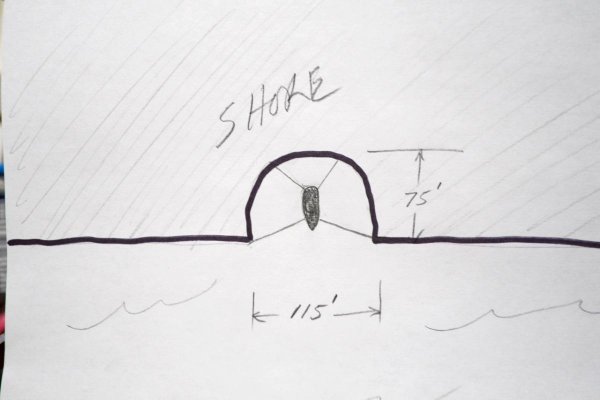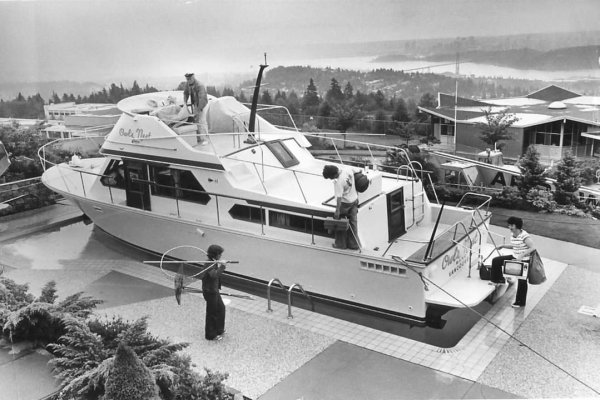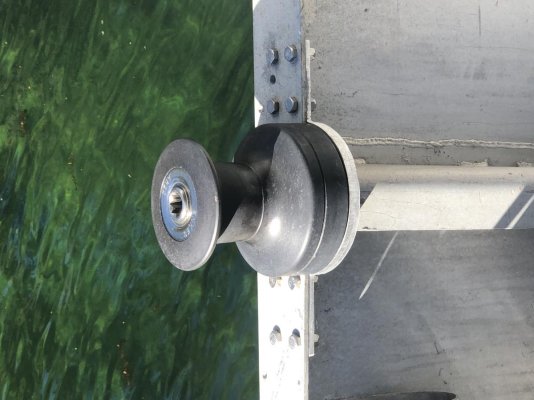MurrayM
Guru
There is a small bay/nook along a very steep shore about 115' across and 75' to the back which looks like it might be a contender for the following technique...
Instead of dropping the anchor and doing a stern tie (bottom starts at over 100' and drops quickly to over 300') could you tie off to shore by the port, starboard, and stern?
The plan would be to position the boat bow out and be held in place by the lines to shore. Tides can be 20' or so, which adds a bit of a wrinkle.
Traditional anchoring opportunities nearby are very marginal with drying estuary flats and steep sloping mud bottoms dropping several hundred feet before levelling out. Strong alternating inflow and outflow winds combined with downdrafts from surrounding cliffs and mountains complicate things further.
Looking for a solution solid enough where one could go hiking up the valley all day and not worry (too much) about what the boat is doing.
Has anybody done something like this? Tips? Warnings?
Instead of dropping the anchor and doing a stern tie (bottom starts at over 100' and drops quickly to over 300') could you tie off to shore by the port, starboard, and stern?
The plan would be to position the boat bow out and be held in place by the lines to shore. Tides can be 20' or so, which adds a bit of a wrinkle.
Traditional anchoring opportunities nearby are very marginal with drying estuary flats and steep sloping mud bottoms dropping several hundred feet before levelling out. Strong alternating inflow and outflow winds combined with downdrafts from surrounding cliffs and mountains complicate things further.
Looking for a solution solid enough where one could go hiking up the valley all day and not worry (too much) about what the boat is doing.
Has anybody done something like this? Tips? Warnings?
Last edited:





